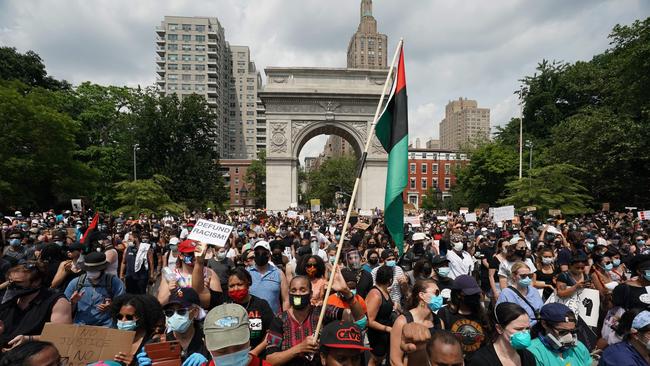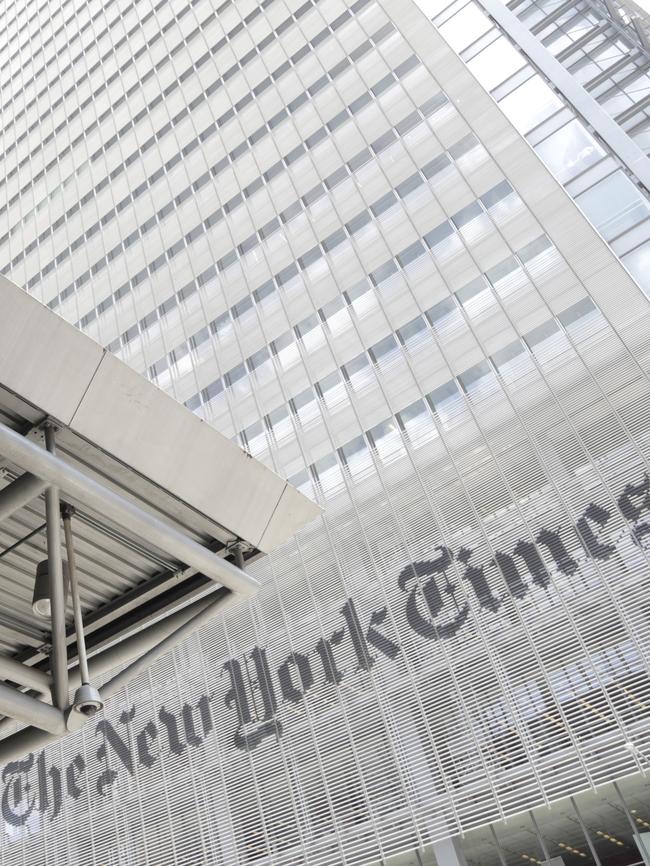Let’s never concede to the moral matrix of the Tribe


With America in trauma, consumed by a frontline political war that is not replicated here — Trumpian populists against progressive believers — it is illuminating that Australian activists opportunistically seek to translate the American mood, slogans and demands to this country. Identity politics does not require historical knowledge.
Social media activists operate in a world of technology-driven globalisation where what happens in an American city has the same relevance as what happens down the road. This telescopic vision is then driven by subcultures — based on race, gender and sexuality — and a new morality where people are deemed good or bad depending on their identity and place in the power structure.
The ideology of “systemic racism” condemns the power structure. The problem becomes the system, not aspects of the system that need reform. Herein lies the essential problem — once you accept critical race theory — that racism is everywhere and permeates everything, you create an end-goal that will never be realised but delivers endless anger.
This paradigm is about power — a new moral culture dividing us into victims and oppressors. The mantra is “us versus them”. Once this takes hold prospects for co-operation are lost.
The reason this is so dangerous, as American social psychologist Jonathan Haidt says, is that inclusive liberalism is not the natural order for humanity. The natural order is tribalism. The quest of political theorists from the dawn of time has been to create structures that negate tribal passions and allow people with different outlooks and identities to live together — the central achievement of liberalism. But now we are reverting. As Haidt said: “Once we bind ourselves more tightly to the group, we embrace the group’s moral matrix and we stop thinking for ourselves. In tribal mode, we seem to go blind to arguments and information that challenge our team’s narrative.”

It’s an assault on reason and sections of the Australian media have become a case study. Black deaths in custody are driven by several factors — the high indigenous incarceration rate, its link to intolerably high levels of entrenched family violence and child abuse within indigenous families, police practices and racism. But in per capita terms non-indigenous deaths in prison are higher.
The mantra from the street — that the problem is white police murdering Aboriginals in jail — is wrong. After saying this, it is essential to point out that some Aborigines have been killed by police. So have white people. The media’s job is to analyse the tragedy with empathy. Yet much of the media is frightened to do this. The attitude seems to be: if you support the protests you cannot publish material that might undermine the cause.
This brings us to The New York Times. Its opinion editor, James Bennet, was forced to resign after publishing a piece by Republican senator Tom Cotton calling on the federal government to deploy troops to restore law and order to the cities, as Donald Trump threatened.
Bennet defended his decision against a staff rebellion, saying it would undermine the integrity and independence of the newspaper “if we only published views that editors like me agreed with and it would betray what I think of as our fundamental purpose — not to tell you what to think but to help you think for yourself”. That didn’t cut it. Bennet had to quit.
Polls showed more than half of Americans agreed with Cotton. His tone was hardly inflammatory as he drew the distinction between the majority of peaceful protesters and bands of miscreants. He wanted troops deployed as other presidents had done since World War II.
With a staff and readers’ revolt, the paper decided publication had been wrong. Its readers should not have been exposed to the article. It constituted a negation of The New York Times’ values.
The paper’s prejudice against Trump is legendary — and that’s distinct from reasoned and ethical arguments against Trump, which are in abundance. Given Trump’s 2016 victory, the media had a decision to make — to report and analyse what had happened or move to the left, embrace a radical identity politics stance and become educated activists in the effort to defeat him. The New York Times is case study in what media organisations have done to themselves in the Trump era. But the paper allowed some regular columnists to dissent.
Bret Stephens wrote the decision was “a gift to the enemies of a free press”. He said: “There is a spirit of ferocious intellectual intolerance sweeping the country and much of the journalistic establishment with it. Contrary opinions aren’t just wrong but unworthy of discussion. The range of political views deemed morally unfit for publication seems to grow ever wider. Arthur Miller once said a good newspaper is ‘a nation talking to itself’. What kind of paper will The Times be if half the nation doesn’t get to be even an occasional part of the conversation?”

Columnist Ross Douthat said of the Cotton op-ed that if the argument “looks wrong within a few days of its publication” that is precisely the purpose of a robust op-ed page. He said its provocative tone had “many equivalents in left-learning pieces that we publish”. The double standard was blatant.
There is, of course, no columnist on the paper who supports Trump. More significant, however, was its confused alternative view of American history. This was exemplified in its 1619 Project on slavery last year. The paper decided the “true” founding of America was not the 1776 Declaration of Independence but in 1619 when the first African slaves arrived. The newspaper purported to discover the “true” nature of America.
In his critique of this project journalist Andrew Sullivan wrote: “True is a strong word. 1776, the authors imply, is a smokescreen to distract you from the overwhelming reality of white supremacy as America’s ‘true’ identity. Hence the insistence that everything about America today is related to that same slavocracy — biased medicine, brutal economics, confounding traffic, destructive financial crises, the 2016 election and even our expanding waistlines!”
The Times announced it was “finally time to tell our story truthfully”. As Sullivan said, all previous accounts of America’s history must have been lies — now The Times had unveiled the truth. And here is the problem. If you believe the task of journalism is to propagate “truth”, then you abandon the liberal tradition of debate, different views and analysis. If you know the “truth” you don’t need a process to probe its complexity. You don’t run the Cotton op-ed.
You don’t debate what Trump does because you assume his evil forfeits any such right. You support the street protesters, their cause and ethics because they reflect “truth”.
The Times engages in fake diversity. It is the diversity of identity politics. But the Cotton event exposes another reality — identity politics leads to conformity, a suppression of views and positions.

Indeed, this is its logic: the real lesson from the Cotton saga. This is not to say newsrooms should not be diverse. They should, and the issue should be pressed. But measuring diversity just by input — the race, colour or sex of journalists — is fake. What matters is output, the journalistic product, its integrity, whether issues of extreme sensitivity are confronted by robust intellectual debate or whether this is deemed to be offensive and immoral.
Injustice to the indigenous peoples demands constant acknowledgment and rectification. It is dubious, however, to see how identity politics, with its fanning of division, its location in emotion and feeling and its insistence on endless white apology, offers anything but a destructive stalemate in facing indigenous disadvantage.
The pressure in Australia now to repress, curb and censor opinion and debate in the media is real. It is having an impact. Who decides what is “truth”? Journalists who decide they are the truth-tellers to the exclusion of other views will find they advance neither truth nor their legitimacy.







Events in America, notably at The New York Times, once the shining light of journalistic inquiry, reveal how identity politics can ruin liberal institutions, undermine the foundations of journalism and compromise the fragile role of reason in public debate.